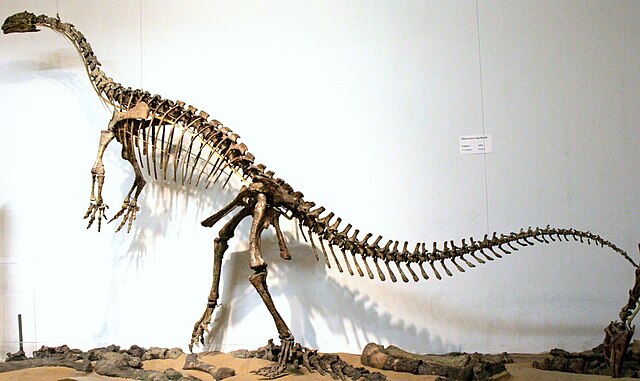Plateosaurus is a genus of plateosaurid dinosaur that lived during the Late Triassic period, around 214 to 204 million years ago, in what is now Central and Northern Europe. Plateosaurus is a basal (early) sauropodomorph dinosaur, a so-called "prosauropod". The type species is Plateosaurus trossingensis; before 2019, that honor was given to Plateosaurus engelhardti, but it was ruled as undiagnostic by the ICZN. Currently, there are three valid species; in addition to P. trossingensis, P. longiceps and P. gracilis are also known. However, others have been assigned in the past, and there is no broad consensus on the species taxonomy of plateosaurid dinosaurs. Similarly, there are a plethora of synonyms at the genus level.
Plateosaurus
P. trossingensis, collection number F 33 of the Staatliches Museum für Naturkunde Stuttgart, Germany, in dorsal view. The skeleton was kept in articulation as found at Trossingen by Seemann in 1933. It has the typical folded hind limbs of most Plateosaurus finds. Unusually, the anterior body is not twisted to one side.
Skull of Plateosaurus at the American Museum of Natural History
Outdated 1912 life restoration by Otto Jaekel showing tripodal pose
Plateosauridae is a family of plateosaurian sauropodomorphs from the Late Triassic of Europe, Greenland, Africa and Asia. Although several dinosaurs have been classified as plateosaurids over the years, the family Plateosauridae is now restricted to Plateosaurus, Yimenosaurus, Euskelosaurus, and Issi. In another study, Yates (2003) sunk Sellosaurus into Plateosaurus. Gresslyosaurus is alternatively considered its own genus or a synonym of Plateosaurus.
Plateosauridae





